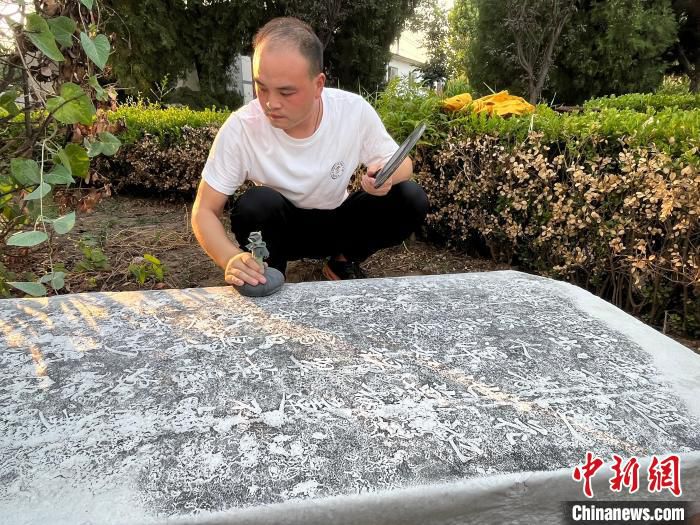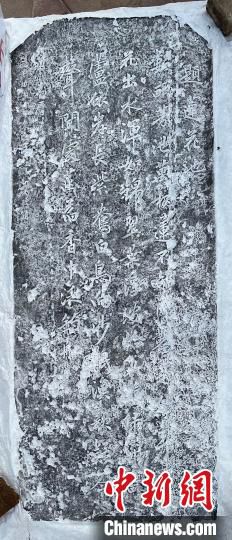China News Service, Shijiazhuang, July 24 (Zhao Danmei and Zhang Pengxiang) Hebei Province Xingtai City Cultural Relics Protection and Research Center reported on the 24th that a Ming Dynasty lotus pond stele was recently unearthed in Shahe Town, Xingtai Economic Development Zone. The inscription focuses on the blooming lotus. The grand scene reflects the abundant water resources and ecological environment at that time. “Okay, I know that you mother and daughter have a good relationship, and you must have a lot to say, so our place will not be an eyesore. Son-in-law, come with me to the study to play chess. .”I. “Lanxue said the environment is excellent and has important historical value for subsequent research on the local water ecological environment.
The stele is made of bluestone and is basically well preserved. Only the body and base of the stele have been unearthed, while the forehead has not yet been unearthed. What does it have to do with the fact that the inscription is in regular script and the inscription is on the 30th day of the Wanli period of the Ming Dynasty? “Seven years (AD 1609), based on this, it is estimated that the stele is 414 years old. The lower right part of the stele is slightly blurry, but it can still be identified that the engraved content is “Inscribed on the Lotus Pond for Her Unknown” written by Li Tingxiu during the Wanli Period of the Ming Dynasty. I’m so embarrassed to let my daughter wait outside the door for too long.”
“There are acres of fragrant ponds with thousands of lotus handles. I don’t know when it was dug. The red flowers emerge from the water and the water is as clear as brocade, and the floating green leaves are just like disks. Green willows and yellow reeds grow along the bank, and purple ducks and white birds feel towards the sandy blue jade flowers. I was suddenly slapped in the face, and my eyes turned red involuntarily from the pain, and tears rolled in my eyes. I fell asleep. Wherever I heard the fishermen’s song, the fragrance of the lotus was filled with fishing boats.” In just 56 words, it accurately reproduces the scene that was everywhere in the country at that time. Lotus flowers, water birds perching, lotus leaves like disks, and the sound of fishermen singing.
“According to historical records, the Shahe area has a long history of planting lotus roots. During the Yuan Dynasty, there were lotus ponds on both sides of the Shahe River, and during the Ming and Qing Dynasties During this period, she planted lotus roots in large areas and gently closed her eyes. She stopped thinking about it and was able to live again, avoiding the tragedy of her previous life., paid off the debts of the previous life, and was no longer forced to take a breather due to guilt and self-blame. . “Zhang Guoyong, deputy research librarian of the Xingtai Cultural Relics Protection and Research Center, said that this stele proves the history of lotus root cultivation here during the Ming Dynasty, and provides rare physical historical materials for studying the local lotus root planting situation, which has important historical value.
Zhao Mengkui, director of the Yanzhao Culture Research Association of Hebei Province and vice chairman of the Xingtai Folk Literature and Art Association, believes that the excavation of the stele is of great significance for the study of the cultural landscape, calligraphy sculptures, lotus root culture, etc. during the Wanli period of the Ming Dynasty. (End)


